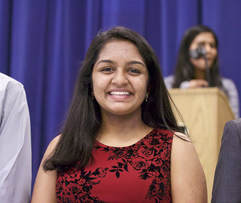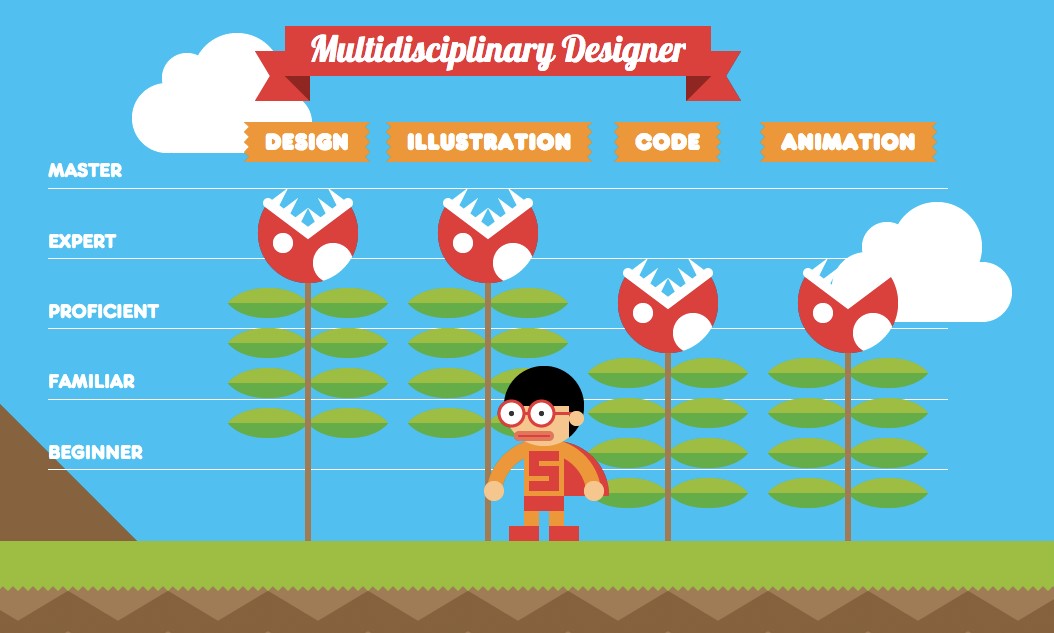|
8/14/2017 0 Comments Building a Game-Changing Portfolio
By Niharika Vattikonda
A portfolio of work is no longer just for the visual and fine arts. Many people in the STEM fields, especially those interested in technology, benefit from putting together a collection of their past work to demonstrate their strengths to a potential employer. A portfolio, which can be in the form of a personal website, includes examples of pieces that demonstrate your expertise in a variety of areas and works of which you are most proud. Here, we provide suggestions of a portfolio for someone in software development, but it can be adapted for anyone working in a majority of STEM fields. Be Prepared First, projects that highlight your skills and education are essential to helping employers gain a sense of your work experience. For instance, when applying to be a developer, if you don’t already have code samples available on your portfolio to show during the interview process, it’s possible that your potential employer will ask you to work on sample projects (most likely without pay) during a probation period. However, on a ready-made website, you can feature games and other interactive projects that demonstrate your skills and prove to your employer that you can jump straight into your new job. Let Your Creativity Shine If you have time to work on a more elaborate project, then creating a unique portfolio that sets you apart from other professional websites could be the key to demonstrating your skills or showcasing your volunteer experience (see this interactive, video game-like resume for inspiration). You can also create or link to previous long-term programming projects, such as if you redesigned a website or an app for a local business or charity. These options are excellent for highlighting your creativity, without the pressure of building something from scratch. They also provide your potential employer the opportunity to see how the site you built is (or could be) used in the community.
Robby Leonardi’s interactive, video game-style resume encourages engagement by demonstrating skills and experience in a unique format like this one. Always Link Your Research Your portfolio should also include any featured publications and research experience. Link the portfolio to either an abstract or a full article, if currently published. If you’ve presented your research at a conference and have a video of your presentation, you can embed the clip into the section where you discuss your research. If you’re just getting started, don’t worry! Many companies value your work on open-source projects that are specifically geared towards beginning programmers. Natasha the Robot’s guide to contributing to open-source is an excellent resource for getting started; she recommends that new open-source contributors get their toes wet by working on documentation or smaller issues that have been flagged by others. Don’t Stop at a Website, Build a Network Be sure to create an online presence by linking your portfolio on professional social media sites, such as LinkedIn. While a developer’s portfolio should feature their best samples of code, Github can also show a potential employer coding history – how often you committed changes to a repository, which projects you worked on to learn different programming languages, and how you have adapted to the ever-changing technologies in the field. This provides employers a more complete history of your research experience. You can use your judgment to decide whether to include personal projects here as well. Don’t Forget About the Hard-Copy Building a portfolio of your best pieces of work can be a great tool, one that is useful for showing a potential employer why your skills and experience are the perfect match for a new position. Even though the portfolio should reflect more information than what can be covered in your 1-page resume, be sure to include a link to a printer-friendly version, since many employers still rely on hard-copy resumes. Keep Your Portfolio Up-To-Date Finally, remember that your portfolio should consistently be updated! When you create new content or transition to a new job or field of expertise, make sure your portfolio is updated to reflect the change. You’ll look polished and ready for whatever comes next. 
About the Author
Niharika Vattikonda is a senior at Thomas Jefferson High School Science and Technology, where she is studying computer science and economics. In the future, she hopes to work on sustainable development policy that brings stability and catalyzes technology-driven growth in the nation’s economy by preparing students for 21st century technology jobs. To that end, Niharika represents almost 188,000 K-12 students of the 10th largest school system in the United States on the Fairfax County School Board, where she works to make sure education policy includes computer programming and algorithmic thinking from an early age. She also is the founder of Teens Transforming Technology, a student-run nonprofit that provides access to computer science for low-income neighborhoods and underrepresented populations from Washington, D.C. to San Francisco. In school, she serves as the Director of Internal Affairs for Coding Lady Colonials, where she creates the annual computer science curriculum for all members, oversees the CSterhood mentorship program for younger students, and organizes her school’s hackathon, HackTJ. When she’s not researching an effective education policy, designing a coding activity for her club members, or planning her nonprofit’s next initiative, Niharika loves being a delegate in Model United Nations and enjoys reading and learning more about economic development using 21st century technology. Comments? Leave them below!
0 Comments
Leave a Reply. |
The Scientista Foundation, Inc. All Rights Reserved © 2011-2021 | Based in NY | [email protected]
The Network for Pre-Professional Women in Science and Engineering
The Scientista Foundation is a registered 501(c)(3) -- Donate!
The Network for Pre-Professional Women in Science and Engineering
The Scientista Foundation is a registered 501(c)(3) -- Donate!

